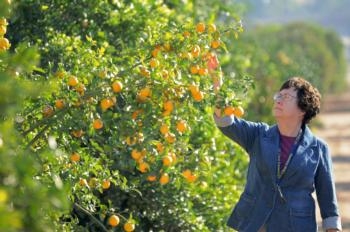From the UC Blogosphere...
Walnut Trees
Walnut Trees by Jutta Thoerner UCCE Master Gardener I have a large Walnut tree in my yard, how...
Love in the Bean Field
Love is where you find it. And sometimes you find it in a bean field. Take the UC Dry Bean Field Day on Sept. 5 at UC...
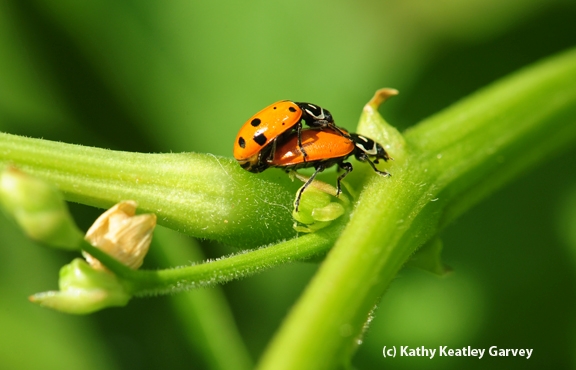
Love in the bean field at the UC Dry Bean Field Day. (Photo by Kathy Keatley Garvey)
Conservation leaders honored at UC Twilight Field Day
Three conservation agriculture pioneers were honored at the UC Conservation Agriculture Systems Innovation Twilight Field Day at the UC West Side Research and Extension Center yesterday, reported Patrick Cavanaugh in the California Ag Today blog.
CASI chair Jeff Mitchell, UC Cooperative Extension specialist in the Department of Plant Sciences at UC Davis, presented the awards before the conclusion of an event that included tours of three local farms and three sites at the field station.
Ron Harben, project director at the California Association of Resource Conservation Districts, was recognized for outstanding service to CASI. Ralph Cesena, Sr., president of Cesena Distributing in Stockton, received the CASI Industry Innovator Award. Danny Ramos, manager of Morning Star company's Lucero Farmers, was presented the Conservation Tillage Farmer Innovator Award.
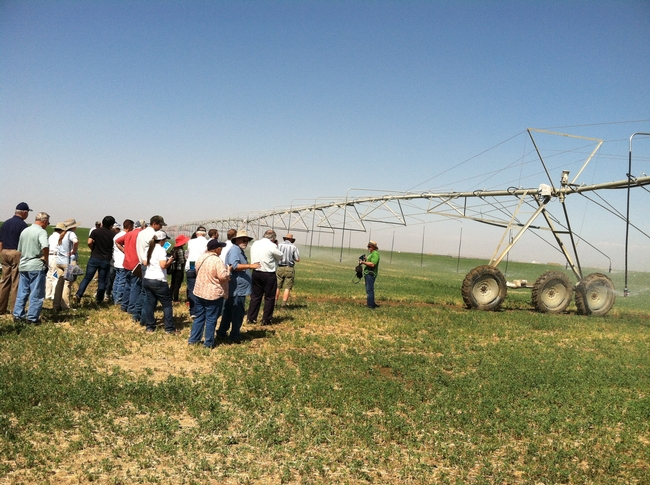
Twilight Field Day participants view a center pivot irrigation system.
A Miss Is as Good as a Mile
A miss is as good as a mile...or a smile. The Buckeye (Junonia coenia) is a striking butterfly patterned with eyespots and...
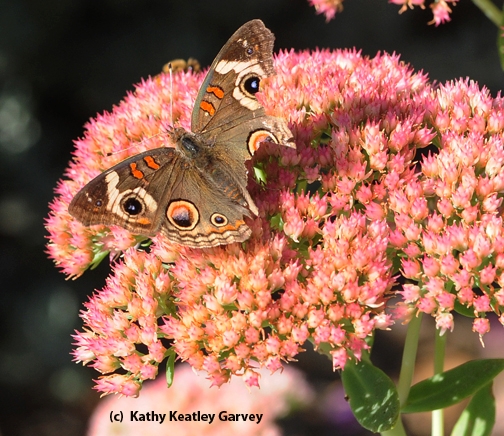
Buckeye butterfly on sedum. Note the missing chunks of its wings. (Photo by Kathy Keatley Garvey)
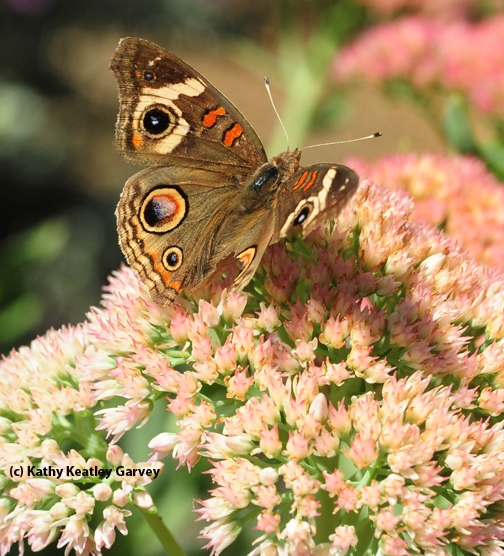
Sideview of Buckeye butterfly-almost a meal for a predator. (Photo by Kathy Keatley Garvey)
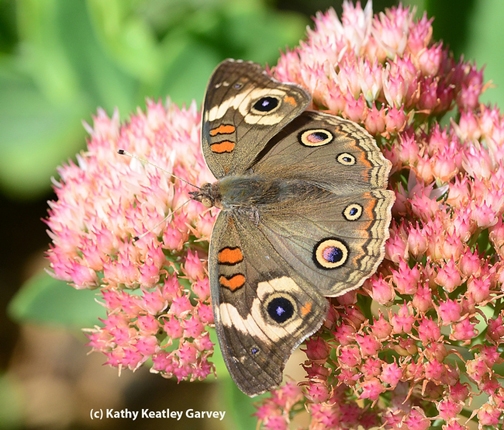
An intact Buckeye on sedum. (Photo by Kathy Keatley Garvey)
Dinuba Asian citrus psyllids the most ever found in the Valley
"It was incredible," said Fresno County entomologist Gene Hannon. "There were easily a dozen on just one small leaf."
Previous finds in the Valley numbered from one to three on yellow sticky traps in the Tulare County communities of Lindsay, Strathmore and Terra Bella.
Beth Grafton-Cardwell, UC Cooperative Extension specialist in the Department of Entomology at UC Riverside, said the number of psyllids in Dinuba means there is a reproducing population.
"And when that happens, we are off and running to getting an established population in the San Joaquin Valley," she said.
Grafton-Cardwell has worked with a team of UC researchers to provide detailed and scientifically sound guidelines for treating farm- and home-grown citrus infested with Asian citrus psyllid on a new UC Cooperative Extension website, http://ucanr.edu/sites/acp.
The website advises farmers and homeowners to regularly conduct visual surveys for Asian citrus psyllid and tap sample (see video) trees in their orchards.



